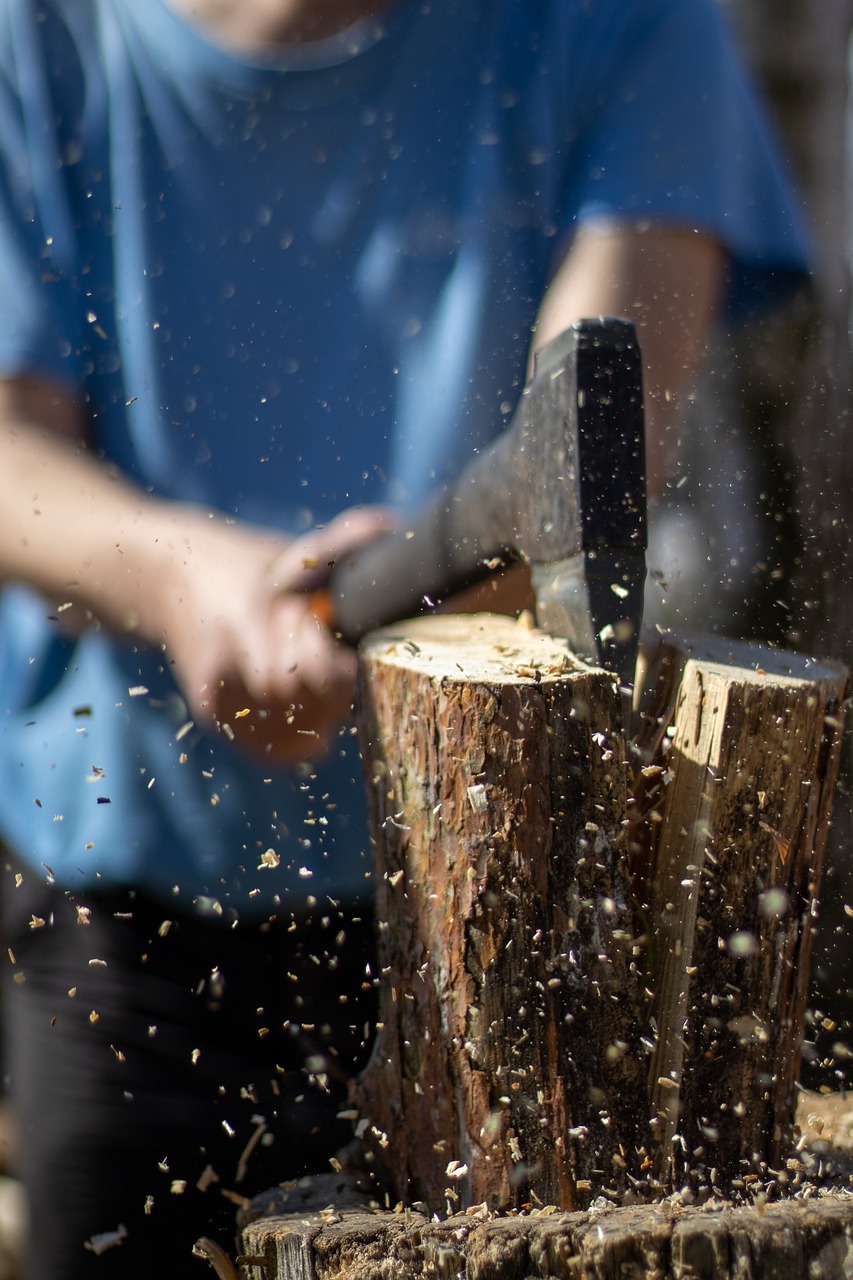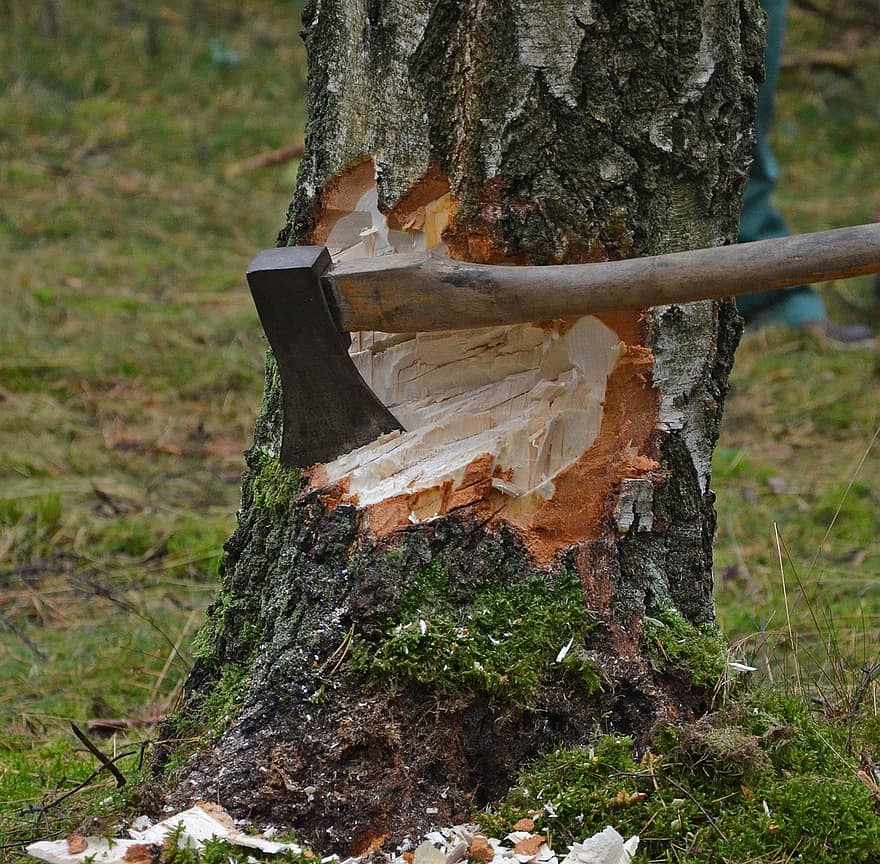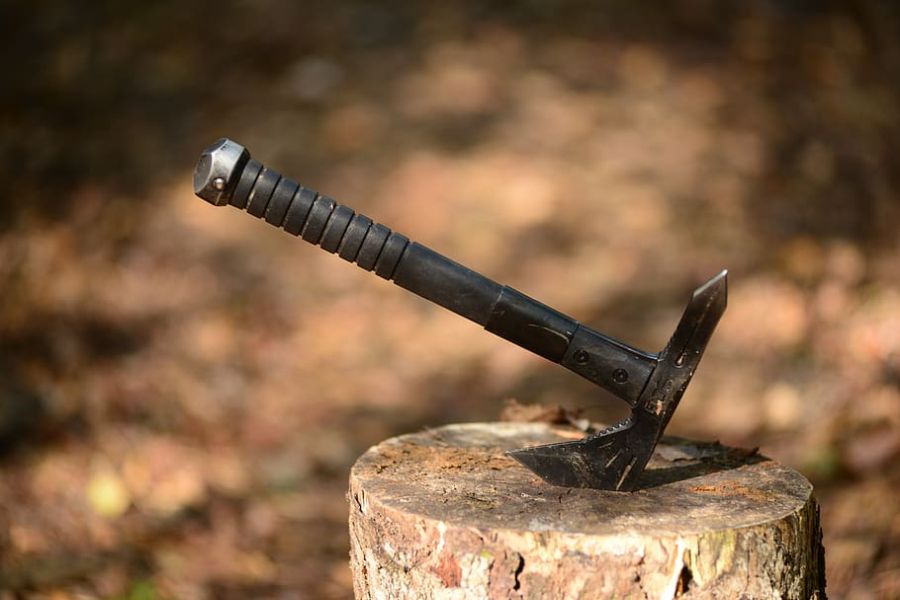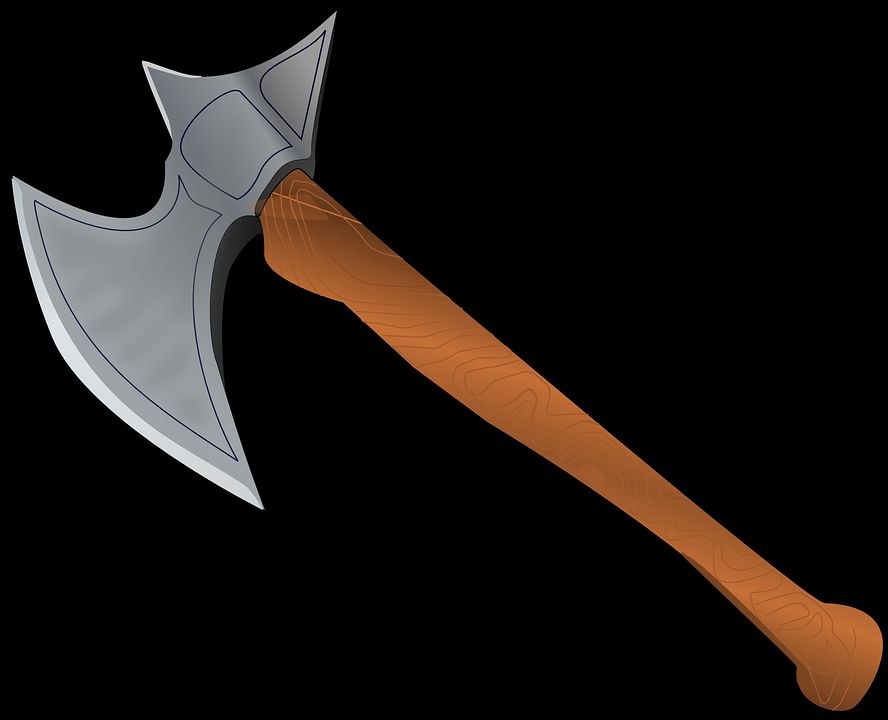An axe is an ancient tool with many uses. In the past it was typically used as a weapon, a hunting tool, and for felling trees. Today, axes are mostly used for woodworking, professional carpentry, and survival purposes. The axe is also commonly used in the yard or outdoors, such as while camping. It’s good to know how to choose an axe, as the type of axe you need will depend on what you will use it for.
Here are the different types of axes and how they are used. And if you are buying an axe or hatchet for various purposes or using these for sport, click the link.
Hatchet
When most people imagine what an axe looks like, this is what they picture. A hatchet is a general all-purpose axe that most people use for light jobs in the yard. It does well for chopping up, kindling, felling small trees, and splitting logs. Hatchets are relatively smaller than other axes, and it has a chunky handle that’s ideally made of hickory wood. It’s designed for one-hand use. It has a weighted head with a flared shape and a sharp-tipped blade. The hatchet axe is a compact axe easy to bring to camping trips.
Felling axe
The felling axe is designed to do the felling of trees and chopping larger logs. It has a thin and sharp cutting blade, and a longer handle. The head is angled more aggressively, and it is designed to produce a powerful swing. The long handle is also made of hickory wood and is meant to be handled by two hands for a more powerful chop. The blade of the felling axe has a flared shape and a thin and sharp tip designed to cut against the wood’s grain. When felling a tree, swing this axe sideways at the tree trunk. It’s great to use for felling small trees and branches. It can also chop wood well.
Tactical axe
A modern invention, the tactical axe is primarily used for chopping, yet it can also function as a shovel, a pry bar, a close-range weapon, and a hammer. It has gained popularity among soldiers, law enforcement officers, security staff, and survivalists. It’s usually made of forged steel with notches and serrated edges to help out with specific tasks. A great tactical axe can make a difference in a survival situation due to its multifunctional use and sheer strength. It’s ideal for bringing for camping trips, as it can be used for chopping wood for campfires, cooking, and digging holes.
Splitting maul
Splitting mauls are generally the same in size as a felling axe, yet its job is to split logs for kindling. Its axe head is heavier, and has a less aggressive, more concave blade to allow cutting the wood across the grain. The head has a chunky wedge with one blunt end and one sharp end – however, the sharp end doesn’t need to be super sharp to function, as the weight and shape of the blade will do most of the work. Splitting mauls can work well even when fairly blunt. Its handle is long and usually made of wood. It’s hard to handle this with one hand due to its heavy weight, and you probably need both hands too for splitting wood successfully.
Tomahawk
Tomahawk axes were first used in North America, where Native Americans invented them. It has been used in the battle since its creation, from the American Revolution to the Vietnam War. These axes look like hatches, but they have a straight handle and are lighter in weight. The straight handle makes the tomahawk easy to throw in combat, and its sharp blade makes it useful for chopping, splitting, digging, and prying. This tool like lathe tools is popular among soldiers but has become more frequently used for camping nowadays because of its versatility and light weight. It’s also popularly used in throwing competitions, that’s why tomahawks are also known as throwing axes.
Broad axe
Also known as a hewing axe, a broad axe is a large axe with a wider blade. Its primary purpose is hewing, or turning round-edged lumber to flat-edged timber. This axe was widely used before industrial sawmills existed. It’s a medium-sized axe that’s commonly used by carpenters but rarely used generally. A broad axe has two types: single bevel and double bevel axe. A single bevel has a flat side and a broad beveled edge designed for chopping. On the other hand, a double bevel axe has both sides beveled.
Carpenter’s axe
A carpenter’s axe is a tool designed for fine woodworking. It’s a small axe that’s a bit larger than a standard hatchet. Traditionally, this axe has a very straight-edged sharp blade with a flat butt that can be used as a hammer. The straighter the edge of a carpenter’s axe is, the better the quality. Modern carpenter’s axes have grooves, which can be used to remove nails from wood. The handle usually has a notch to allow a better grip and more precise control.
Double bit axe
As it is named, the double bit axe has two bits or blades, one on either side of the head. It’s usually symmetrical from the front, while one blade is sharp, and the other is blunt. The sharp side is used for felling trees and chopping wood, while the blunt side is for finishing off the job of collecting firewood and splitting the wood into small pieces for kindling. Since it’s a double-headed axe, it’s quite cumbersome to use and carry, and it often tires people out halfway through a job. This type of axe isn’t mass-produced anymore, and are now used only by lumberjacks. You probably have to go to a specialist axe maker or merchant to find one.
Pickaxe
A pickaxe is a hand tool with a double head at the top, shaped like a “T.” Originally, both sides of the head would be a pick, but modern pickaxes have a chisel and a pointed pick on either side. The pick end can be straight or curved. A pickaxe is useful for gardening and landscaping and is specifically used for breaking up concrete, rocks, or hard soil. The chisel end is used for prying open gaps between rocks and splits on the earth. The chisel also adds weight to balance out the axe, increasing the pick’s momentum when it’s swung.
Adze
An adze is a hand tool with a sharp cutting blade. It is used for sharpening, smoothing, or carving out wood. The blade of an adze is set at a right angle and is very sharp to carry out refined and detailed carpentry. There are different types of adze, but they can be categorized into two major groups: hand adzes and foot adzes. Hand adzes are swung with one hand and come with a short handle. Meanwhile, foot adzes are swung with both hands and come with a longer handle.
Roofing axe
A roofing axe is a craftsman tool used for roofing. It may not be as popular today due to modern inventions, but some roofers still prefer this traditional tool. It has multiple purposes, thanks to its two-sided head. One side is a sharp blade used for cutting roof shingles, while the other side works as a hammer used for pounding roofing nails when fixing shingles. The hammer side is often magnetized, so you don’t need to hold the nails in place by the hands. Roofing axes also have a node on the sharp blade side. It can be used by hooking over the front face of the shingle below the one you are setting.
Viking axe
While there’s no real use for Viking axes anymore, frequent battle reenactments and Viking costumes make their fake versions easily accessible. A standard Viking axe is large and is used as battle weapons. These axes are well-balanced and could weigh less than two pounds, making them easy to bring and carry during battles. The head of Viking axes vary in shape, but it usually has a heavy beard. The tips of the blade are sharp, so it can inflict wounds and slash throats, while the blunt butt is used for banging someone in the head. Typically, Viking axes today are studied to learn about past civilizations.
Miner’s axe
Miner’s axe was originally used by miners in Europe since the Middle Ages while mining silver and copper mining. These axes come with a long head and a short handle, which is suitable for use in close quarters. Over the years, miner’s axes became a status symbol among miners, and some have detailed engraving on the head of the axe.




